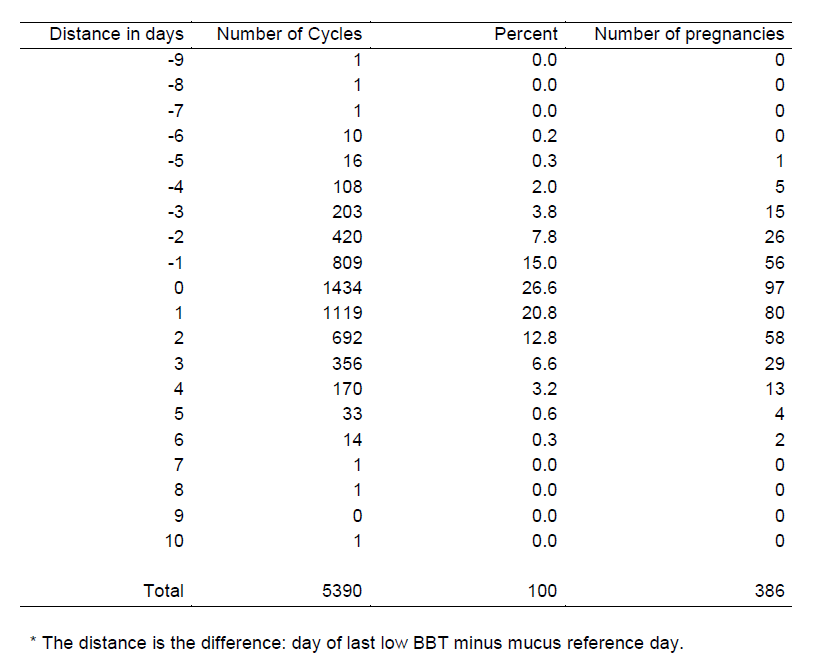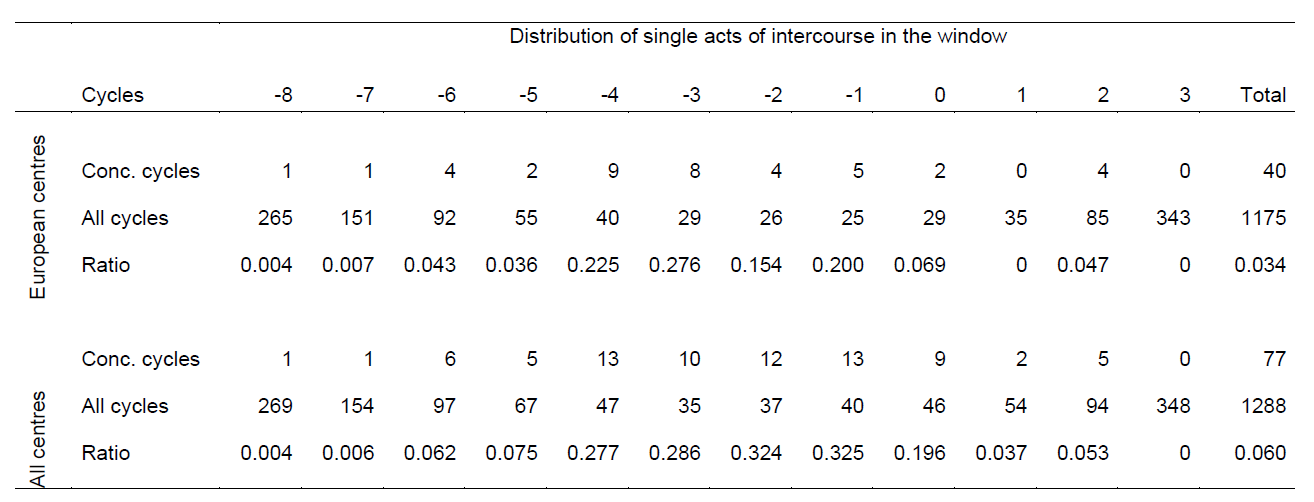«Daily Fecundability First Results from a New Data Base» (B. Colombo, G. Masarotto, 2000).pdf (317.1 KB)
This multicentre study has produced a database of 7017 menstrual cycles contributed by 881 women.
From 1992 through 1996, 782 women were recruited with the collaboration of 7 European centres (Milan, Verona, Lugano, Düsseldorf, Paris, London and Brussels) providing services on fertility awareness and natural family planning.
The entry criteria for the subjects were:
- women experienced in use of a Natural Family Planning method;
- married or in a stable relationship;
- between 18th and 40th birthday at admission;
- having at least had one menses after cessation of breastfeeding or after delivery;
- not currently taking hormonal medication or drugs affecting fertility.
- Neither partner could be permanently infertile
- and both had to be free from any illness that might cause sub-fertility, e. g., endocrine disorders.
- It was also required that couples did not have the habit of mixing incidences of unprotected and protected intercourse.
Women were excluded if any one of the previous criteria was not fulfilled.
Data from an additional 99 subjects were also included retrospectively in view of their relevance to the aims of the study.
Table 6:
Distribution of cycles according to the distance between the reference days in 5390 cases in which both days have been identified (European centres).*
Table 7:
Direct estimation of fecundability in the window [-8,3] around the BBT reference day for the European centres and
all the centre
Table 8:
Direct “adjusted” estimation of fecundability in the window [-6,1] around the reference day (European centres).
Table 9:
Daily estimates in cycles with one or more acts of intercourse in the windows
(European centres; Schwartz et al. model [see 2.5.1])



